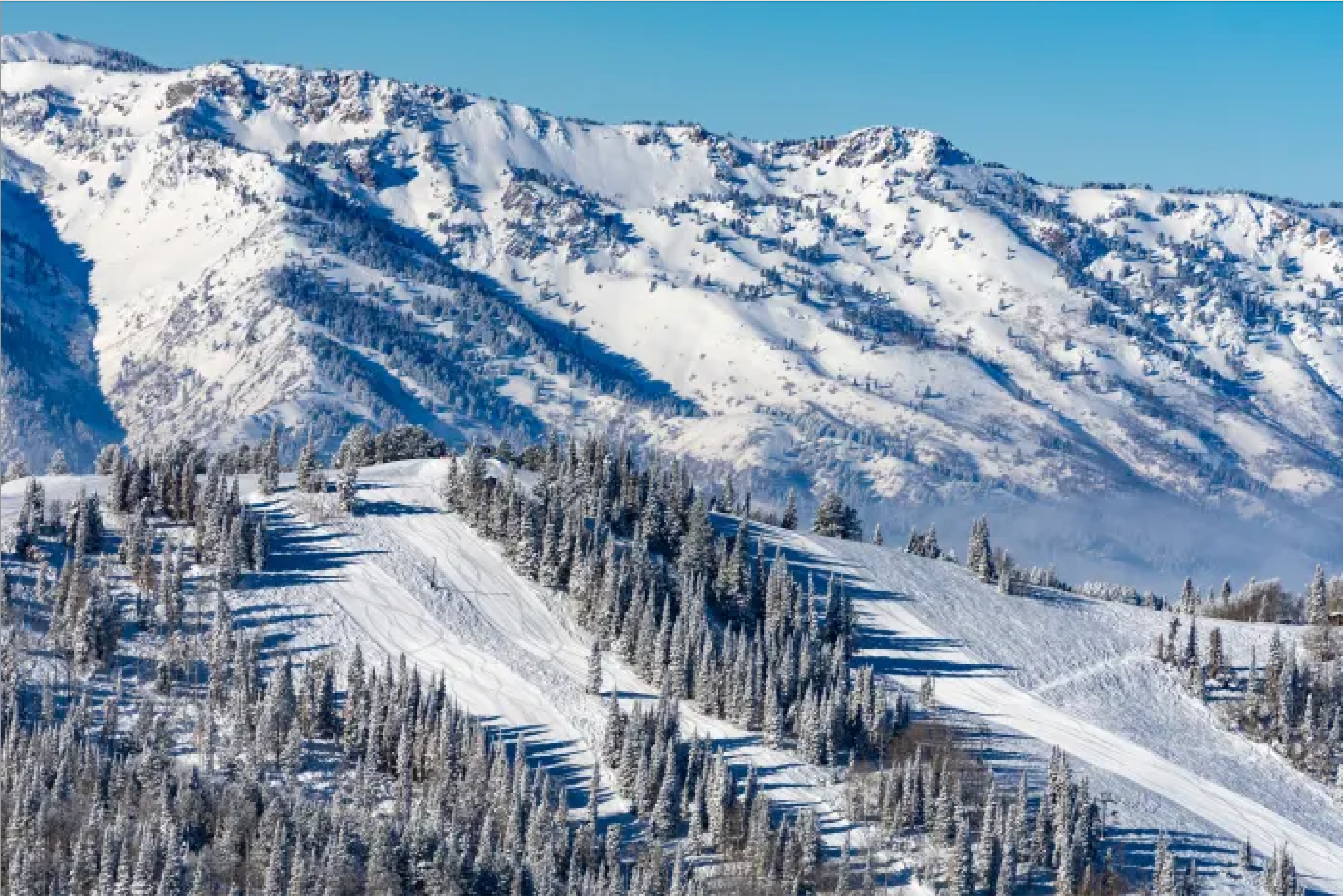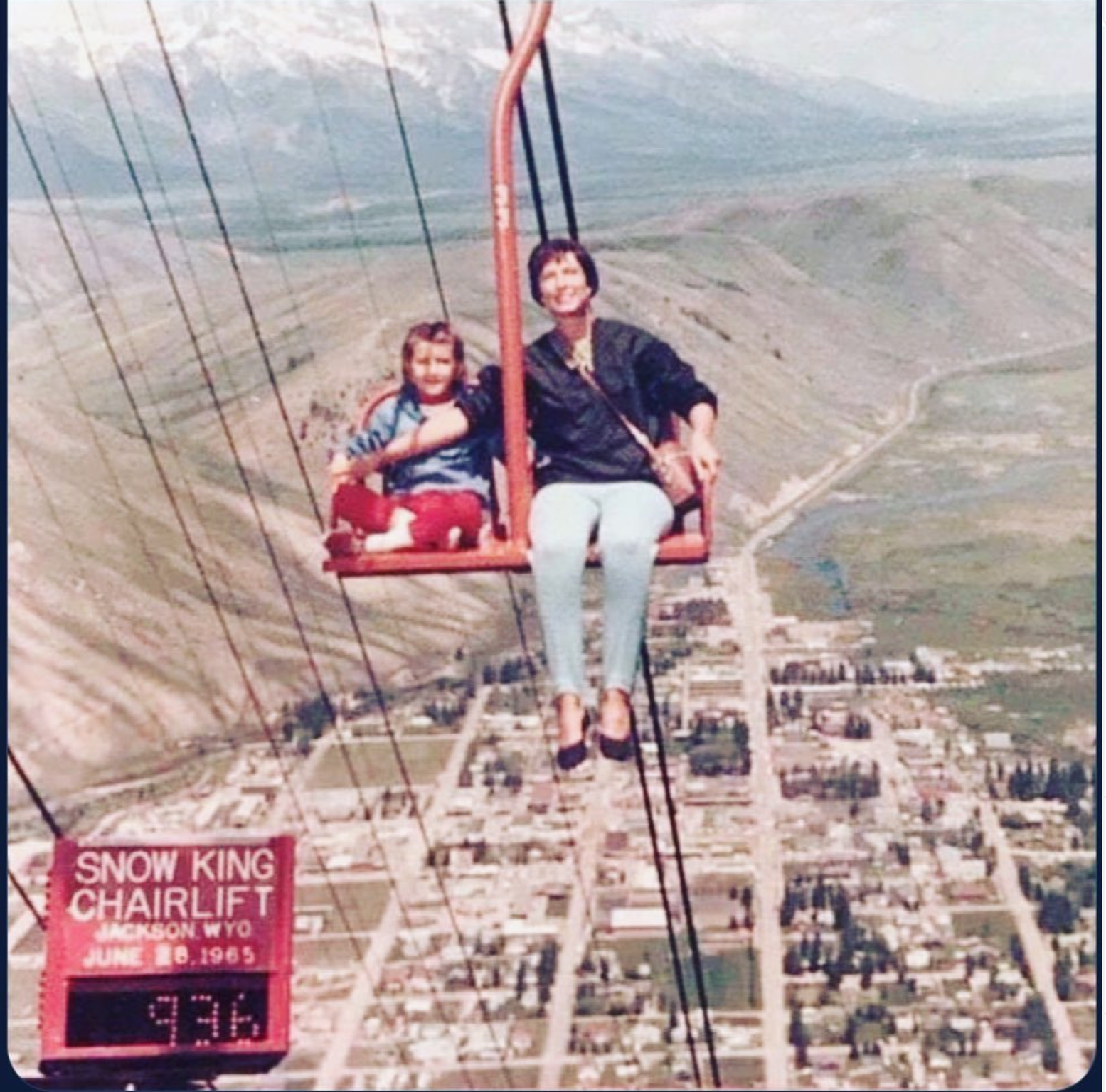World's Longest Ski Runs

At the end of the run, does it really matter?
Photo top: Vallee Blanche/Mer de Glace above Chamonix. Chamonix-Mont Blanc photo
In this day of perpetual social media marketing hooks, “extremes” sell: hottest, tallest, biggest, fastest. Ski resorts are not immune. However, determining a superlative like the longest ski run on the planet is not as simple as it would seem.
This exercise is rife with caveats. Are we talking about vertical feet or length? Lift-served or not? Off-piste or maintained? Perhaps the most mainstream solution is to determine the longest runs by using both vertical and length—further sorted by some sort of lift service. Or perhaps just consider it a skier’s bucket list.
Guinness Book of World Records says that a run at Davos, Switzerland, from the Weissfluhjoch to Parsenn, is “the longest all-downhill ski run in the world” at 7.6 miles in 6,692 vertical feet (12.3 km and 2,034 m). Many may disagree, partly due to the ambiguous “all-downhill” criteria, designed to exclude anything with a hike or another lift ride in the middle. Or a bus ride at the end. And we won’t delve into Guinness’s definition of lift-served.
One of the best-known lift-served long runs in the world is Chamonix’s Vallée Blanche, which helps explain why we feel a little mystical about such endless terrain. Its most far-flung route is 13.67 miles (22 km), all of it off-piste and bedecked with chamois, blue-ice caverns, crevasses, lurching seracs and stupefying mountain views. Its full 9,200-foot vertical (2,797 m) goes all the way to the Chamonix valley floor, though
climate change has increasingly made that a rare reward.
Zermatt, Switzerland, features what is marketed as the longest red (intermediate) run in the world. The 13.6-mile (22 km) trail from the Klein Matterhorn to the Italy's Valtournenche measures 7,739 vertical feet (2,353 m) and delivers you to another country. It does require a lift ride in the middle, however.
Alpe d’Huez, France, describes its famous Sarenne route as “Europe’s longest black run.” The nearly 10-mile (6.2 km) descent in 5,872 vertical feet (1,785 m) can be done, according to the resort, “without having to take a lift.”
North America looks to Revelstoke, Canada, for bragging rights. Revelstoke claims the Last Spike as the longest maintained ski run in North America at 8.3 miles (13.4 km). As a plus, the run descends the resort’s full vertical, which at 5,620 feet (1,708 m), is tops on the continent.

Netflix Co-Founder Buys North America’s Resort-Acreage King
Powder Mountain, Utah, Tries Again to Be the Resort of the Future
Tech money has joined forces with the largest ski resort (by skiable acres) in North America, in what may have been an inevitable marriage. On September 6, 2023, with a $100 million investment, Netflix co-founder Reed Hastings became the majority owner of Powder Mountain. Hastings had already acquired a minority stake in the Eden, Utah, resort, which covers over 8,464 acres—roughly 16 percent broader than Park City.
Hastings has only started his re-imagining of the resort in what he has termed “Powder Next.” To that end, he recently pulled all available residential lots at Powder off the market. “That’s a big step that you do when you have confidence that it’s going to be a lot more successful in a year,” Hastings told the Salt Lake Tribune. “So we kind of don’t want to sell those lots at current prices.” Hastings said he envisions the reworked resort as being a “premium place in the world for being and doing.”
Perhaps Powder Mountain will go full circle with that vision. It was purchased by a group of Silicon Valley entrepreneurs out of foreclosure for $40 million in 2013. Their vision was to build a future-embracing, eco-friendly resort with 500 homes developed around a hub of education, research and alternative medical facilities. Various challenges ensued, and fewer than 10 percent of the homes were built. Hastings, who stepped down as CEO of Netflix last January and now serves as executive chairman of the company, already had a home at the resort before he bought in. —Greg Ditrinco

Old Time Lift Safety
Snow King Mountain Resort, Wyoming, about a dozen miles and several thousand light years in attitude from Jackson Hole Mountain Resort, remembers the good ol’ days. The resort also wisely recognizes that hazy nostalgia might cloud some of the darker aspects of those good ol’ days. For instance, this image, dated June 8, 1965, posted on Snow King’s Instagram feed, is headlined “Safety Standards in the 1960s.” Snow King wisely notes that “We have upgraded a bit since these days!” A Skiing History editor recalls riding that chair. Its towers were made of telephone poles, bolted together into tripods. They creaked.
Snapshots in Time
1924 And So It Began
The Winter sports of the eighth Olympic Games were officially opened today with the customary Olympic ceremonies, presided over by Gaston Vidal, Under Secretary of State for Physical Education. M. Vidal received the oaths of amateurism by the athletes entered for the competition. The teams of all the nations represented, bearing their national flags and emblems, then paraded from the City Hall to the skating rink, where the actual competitions will begin tomorrow. On the arrival at the rink Under Secretary Vidal declared the official opening of the sports. His voice, caught up by enormous amplifiers on top of the grandstands, was sent reverberating up the sides of the high mountains which give the Chamonix Valley its magnificent setting. — “The Olympics in Winter” (New York Times, January 25, 1924)
1975 Free-Heel Revolution
If you’re a cross-country skier in the West, you may well consider yourself a pioneer. Just as the frontiersmen had to adapt to the mountains of the West, so also do cross-country skiers have to adapt their methods and equipment. And since touring is just beginning to boom in the West, the field is wide open for search and discovery. Here in Crested Butte, the telemark turn has turned the sport upside down. A group of skiers will ski to the top of a mountain with the sole purpose of linking a hundred or so telemarks together down a virgin bowl. — Rick Borkovec, “Trendsetters” (Powder, November 1978)
1989 A Turn for the Worst
“Collisions have become the number one cause of injury in skiing,” said Linda Meyers Tikalski, a U.S. Ski Team member and an Olympian at the Squaw Games. “Skiers think control means ‘not falling.’ The new skiers don’t think ‘turning.’ They think ‘cruising.’ Unless we can convince skiers that good skiing is good turning, we’re in trouble.” — Mort Lund, “No-Risk Skiing” (Snow Country, February 1989)
1990 Olympic Need
I have enjoyed reading your magazine through the years. There is only one suggestion I have for you. Let’s see more time and money spent on our U.S. Olympic ski team and on Olympic racing worldwide. Even though it is two years away, there are athletes preparing. I feel it would be interesting to see what is happening in the Olympic world. — Lori Bucher, Aurora, Indiana, Letters, “More on the Olympics” (Skiing Magazine, October 1990)
2001 Bye-Bye Ban; Hello Boarders
The Aspen Skiing Company is looking to youth to lead it out of the wilderness of complacency and sagging skier numbers into a more prosperous future. Thus it was on April Fools’ Day, of all days, last season that the resort’s notorious anti-snowboarding walls came tumbling down on Aspen Mountain to great fanfare, if not the actual trumpets of Jericho. Because it’s Aspen and therefore good news copy, on April 1 the town is jammed with more satellite uplinks than after Ivana Trump spied Donald’s girlfriend during a family ski vacation. — Jay Cowan, “The New Aspen” (SKI Magazine, September 2001)
2023 Shrinking Prominence
Mont Blanc’s peak has been measured at 4,805.59 m (15,766 ft 4 in), which is 2.22 m shorter than in 2021. The mountain, which straddles France, Italy and Switzerland, is measured every two years to try and track the impact of climate change on the Alps. French chief geometer Jean des Garets said the shrinking could have been caused by less rain this summer. “We’re gathering the data for future generations,” he said. “We’re not here to interpret them, we leave that up to the scientists.” — “France’s highest mountain Mont Blanc is shrinking.” (BBC.com, October 5, 2023)